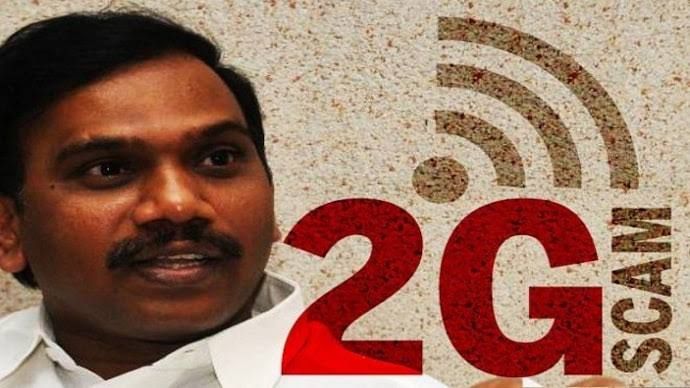Author- Mahendra Pratap Bharti, BA.LLB Student, from Gautam Buddha University Greater Noida
INTRODUCTION
The hunger strike for 21 days was once done by Mahatma Gandhi for his illegal detention against the British regime during the “Quit India Movement” in 1942. It was the time when India was neither a democratic state nor the Indians were running a government; India was an occupied colony of Britishers. Still, his hunger strike shook the foundation of the British Empire. The similar hunger strike for 21 days was done by Sonam Wangchuk (an activist, scientist, teacher, Ramon Magsaysay award winner, etc.) from March 5 to March 26, 2024 in the fragile atmosphere and freezing cold of the Ladakh valley, but his hunger strike went unnoticed by Indian mainstream media as well as by the Central government of India. Whatever the reasons could be for this ignorance on his requests via hunger strike, it was the duty of the Central government to provide him and the people of Ladakh, an assurance that a suitable action would certainly be initiated regarding the issues. However, this was not only one protest that took place in Ladakh in recent years, there have been multiple protests and strikes in Ladakh for the same demands and some protests are still going on. This paper tries to identify all the issues and demands that are being raised in the beautiful valley of Ladakh. The paper will try to understand the situations and provide a way forward to the situation.
BACKGROUND
The Indian legislators enacted the Jammu & Kashmir Reorganisation Act in March 2019. With this, two new Union Territories, namely Jammu & Kashmir and Ladakh were created by bifurcating the Jammu & Kashmir state and abrogating its special status under Article 370. With this, the total number of states in the country was reduced to 28, while the UTs number rose to 9.
During this bifurcation, the Jammu & Kashmir UT was given a separate legislature, just like Puducherry while Ladakh was denied the same, like Chandigarh and both said to be headed by Lieutenant Governors (LG).
Since this bifurcation, there have been several strikes and protests that are being done in the valley, One of the first protests was done in 2020, when the Ladakhis boycotted the Hill council election in Ladakh. Since then, the Ladakhis have been demanding a separate legislature as well as securing Ladakh in the 6th Schedule of the Constitution of India. There are a few other demands as well, like two Member of Parliament seats in Leh and Kargil, respectively, and giving Ladakh the status of a tribal state since its majority of population belongs to tribes, preserving the astonishing atmosphere of the Ladakh valley, and protecting the encroachment of outsider industrialists and companies. Let’s take a look at the demands one by one to understand them better.
Demands
- Statehood to Ladakh
The Kargil Democratic Alliance (KDA) and Leh Apex Body (LAB) have been raising demand since bifurcation to provide a full-fledged statehood by abolishing its status as Union Territory. Now these two parties have jointly started protests to raise their voices for the claim for complete statehood for Ladakh.
The complete statehood means Ladakh would have greater political autonomy and greater powers of decision-making. A full-fledged state has its own government for managing its internal affairs, though it must maintain a balance with the central government. In general, complete statehood for Ladakh means that Ladakh would be able to exercise all those powers and functions that are provided to a state under the Constitution of India.
- Safeguards under the 6th Schedule
The people of Ladakh have been demanding to safeguard Ladakh under the 6th Schedule of the Constitution of India because most of the population of Ladakh belongs to the ‘Scheduled Tribes’ community. Schedule 6 of the Constitution implies the administration of these certain tribal areas as autonomous entities. Article 244(2) and 275(1) of the Indian Constitution provide the provisions for the 6th Schedule.
Under the 6th Schedule, an autonomous district is created, and with the power given to governors for organising and reorganising these districts, they can change names and even define their boundaries. When there are different tribes in a single autonomous district, the governor can further divide them into various autonomous regions.
Every autonomous district has a district council, which has 30 members, Four of them are nominated by the governors, while the rest are elected by the people. These elected members have office tenure of five years on the pleasure of the governor. These autonomous districts contain a separate regional office.
These councils are given jurisdiction to administer certain areas by themselves. They can make laws and rules on areas like forests, land, canal water, village administration, shifting cultivation, inheritance of property, marriage & divorce, social customs, and so on; however, an assent of the governor is required for validating these laws. They are given some other powers, like establishing and managing primary schools, markets, dispensaries, roads, etc. they are even empowered to collect land revenues. And most importantly, none of the acts of parliament or state legislature apply to these autonomous districts.
The people of Ladakh are demanding special status under Schedule 6 so that they can manage their internal affairs and do not have to depend on the LGs for every second thing. Since Ladakh has a majority population of tribes, they are protesting to get their rights secured.
- Separate Constituencies of Parliament
Since the bifurcation of Ladakh from Jammu and Kashmir, Ladakh has been given only one constituency of parliament, means Ladakh can elect only one MP and that one MP is the sole representative of the whole territory of Ladakh in the Lok Sabha. Leh and Kargil regions of Ladakh have unique demographic and geographical characteristics, which are very difficult to manage by a single elected MP, hence, the voice is raising in valley to increase the constituencies to 2.
- Creation of a Separate Public Service Commission
Yet another demand that is being raised in Ladakh is the establishment of a separate public service commission in Ladakh, just like in other full-fledged states of the country. The people of Ladakh are raising voices to secure the future of their youth by providing them with equal opportunities for employment through an equal allocation of resources.
The public service commission of a state has several functions, like conducting the examination for the purpose of appointment to the state services; they can directly recruit by selection through interviews, and can also promote or depute the officers. Hence, it is a requirement of a state to have a body like the Public Service Commission that can manage and perform all these functions properly.
- Protection of the Environment
Ladakh is culturally rich, vibrant, and geographically situated as the crown of India. Snow-clad Himalayan ranges, turquoise lakes in eastern Ladakh, etc. have been attracting tourists from all over the world. Many travellers, solace seekers, pilgrims, filmmakers, etc. are mesmerised by the beauty of the valley and hence they visit the region frequently, which is creating pollution in the valley. This pollution would have an adverse effect in preserving the beauty of the valley, that is why, to protect the environment of the valley, people are protesting and going on strikes.
These are the five main demands that are being raised through the protests and strikes in the fragile weather of the valley. Thousands of people are coming to the streets protesting and raising their voices for the fulfilment of their demands.
Now, let’s understand the perspective of the government and the ministerial interventions that have been done to meet the demands of the protests and strikes in the valley.
Ministerial Talks:
The protests and strikes are being done in the valley since 2020 but the first official meeting between the Ladakhi leaders of Apex Body & KDA and the Ministry of Home Affairs (MHA) was done on January 4 of the current year when the MHA constituted a High-Powered Committee chaired by Minister of State for Home Nityanand Rai for Ladakh UT. The result of this meeting was that the government’s representatives requested the Ladakhi to present their issue in written format.
After this, the second official meeting was conducted on February 19 the result of this meeting was the a ‘Sub Committee’ was formed and number of delegates was reduced to 6 from 14.
Another meeting took place on the 4th of March this year, where the central government completely denied the demands of the Ladakhis and stated that neither complete statehood nor the protection of Schedule 6 can be granted to them.
Government Perspective
The government never expressly presented their opinion on the strikes and protests in Ladakh. But what we can generally understand from the approach of the government is firstly the geographical location of Ladakh, it is situated at the top of the Indian state and shares borders with China and Pakistan. Due to this, there is always a high risk to threat from the external world. Secondly, by granting Ladakh a special status under Schedule 6 of the Constitution, Ladakh would be divided into multiple autonomous districts where the final decision making would get delayed as there would be multiple power centres.
Way Forward
There had been multiple protests and strikes in the valley. Sonam Wangchuk went on a “fast until death” hunger strike from March 5 to March 27 of the current year. He and thousands of Ladakhi were sleeping in the open space in the shivering cold of the valley. When he ended his hunger strike after 21 days, the women of Ladakh continued the strike daily. The number of people in strikes are rising day by day.
However, the government needs to conduct some meetings and try to better communicate with the people of Ladakh. Following points might be a way forward for the situation:
- Official meeting can be held between the government representatives and the representatives of Ladakh, where they can agree upon mutual understanding about what can be done to call off these strikes and protests.
- Better Communication: Government representatives can hold press conferences to address the situation in Ladakh and provide them with assurance that suitable action will certainly be taken upon mutual understanding.
- The visit of the Government Representative to valley might give them assurance and grant them relief that the government is really looking forward to resolving their issues.
Conclusion
These strikes and protests are never good for the common public, especially to daily wage earners and those who are doing small work or businesses. The valley of Ladakh has been witnessing these strikes and protests for 4 years now. There have been some official meetings conducted between the representatives of both side and yet no desired outcome has been achieved. Both sides’ representatives shall mutually collide and form an understanding to resolve the issue as well as to call off these strikes.
References
- https://www.hindustantimes.com/india-news/jammu-kashmir-and-ladakh-become-separate-union-territories-from-thursday-10-points/story-fsYC3R1HFXFZxzlwomycrJ.html (visited on April 1, 2024)
- https://timesofindia.indiatimes.com/india/climate-activist-sonam-wangchuk-ends-fast-after-21-days-ladakh-statehood-stir-to-continue/articleshow/108800638.cms (visited on April 2, 2024)
- https://www.drishtiias.com/pdf/indepth-6th-schedule-and-ilp.pdf (visited on April 2, 2024)
- https://www.downtoearth.org.in/blog/environment/here-is-why-ladakh-needs-the-sixth-schedule-and-statehood-95223 (visited on April 2, 2024)
- https://thewire.in/politics/the-roots-of-discontent-in-ladakh (visited on April 2, 2024)
- https://www.drishtiias.com/daily-updates/daily-news-analysis/ladakh-s-statehood-demand (visited on April 2, 2024)



